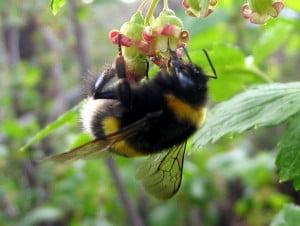The honey bee is very common, highly social and important to humanity because it makes honey and pollinates our food crops. Without this important bee, many people would go hungry. Young honey bee “workers” spend much of their time in the colony taking care of baby bees. Older bees work outside on jobs such as collecting food. In these worker honey bees, a substance called juvenile hormone is not involved in egg laying. Instead, it determines when the bees stop working inside and start working outside.
Related articles
- Morflora Discovers ‘Universal Key’ To Unlock Plants And Protect Against Diseases
- Meet The Pirate Bugs That Help Israeli Farmers Keep Their Produce Pest-Free
Somewhere along the evolutionary history of these bees, juvenile hormone stopped doing one job, and started doing a different job, says Dr. Adam Siegel, a Fulbright postdoctoral research fellow in the Hebrew University lab of Dr. Guy Bloch. Fulbright is the US government’s most prestigious and widely-known academic exchange program. The US–Israel Educational Foundation is responsible for the management of Israeli participation in the program.
Scientists are interested in juvenile hormone. One way to work on this question is to study the hormone in a bee that demonstrates some characteristics of solitary bees and some characteristics of highly social bees.
Bumblebees to the rescue
The bumblebee is a perfect bee for this type of study, as they live in groups and have an egg-laying queen bee and worker bees. But the groups are small compared to honey bee groups, and worker bees have very similar bodies to the queen bee. The workers will also start laying eggs as the colony gets old. Additionally, the worker bees have a much less organized system of division of labor. Worker bees will switch from inside jobs to outside jobs and back again throughout their lives.
Like the honey bee, the bumblebee is also a very important pollinator of food crops. Very little is known about what juvenile hormone does in these bees, which demonstrate an intermediate level of social behavior. The Bloch lab team is working to figure out what some of the functions of the hormone are in the bumblebee. “This will help us to understand how this important hormone has taken on new functions in social systems,” said Siegel. In addition, this work has very important implications for people.
…
To continue reading this article, click here.
Via The Jerusalem Post
Photo by Tie Guy II
Related posts

Resilient And Nutritious New Plant-Based Milk Aims To Make A Splash

Chocolate From Cultivated Cocoa Comes Without Environmental Toll

Plastic Fantastic: Startup Takes PVC Back To Its Crude Oil Roots





Facebook comments